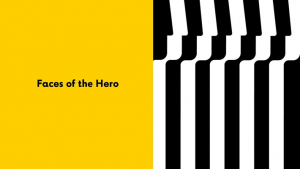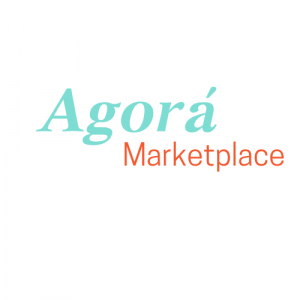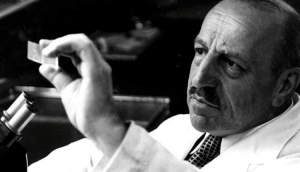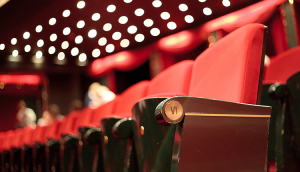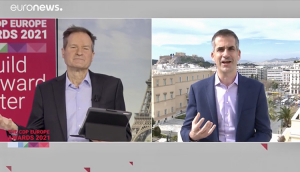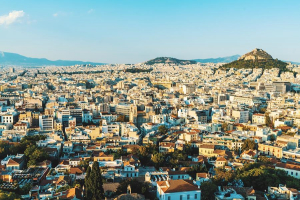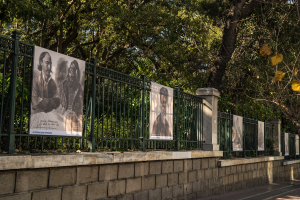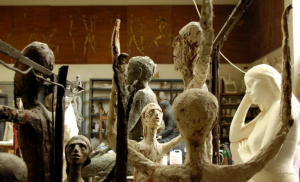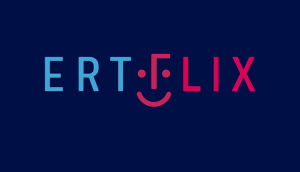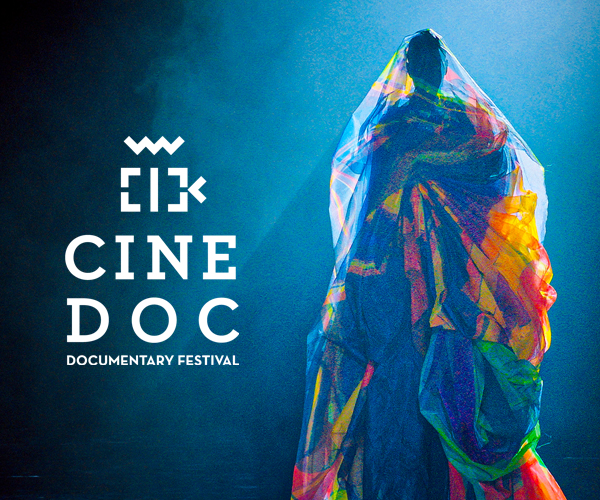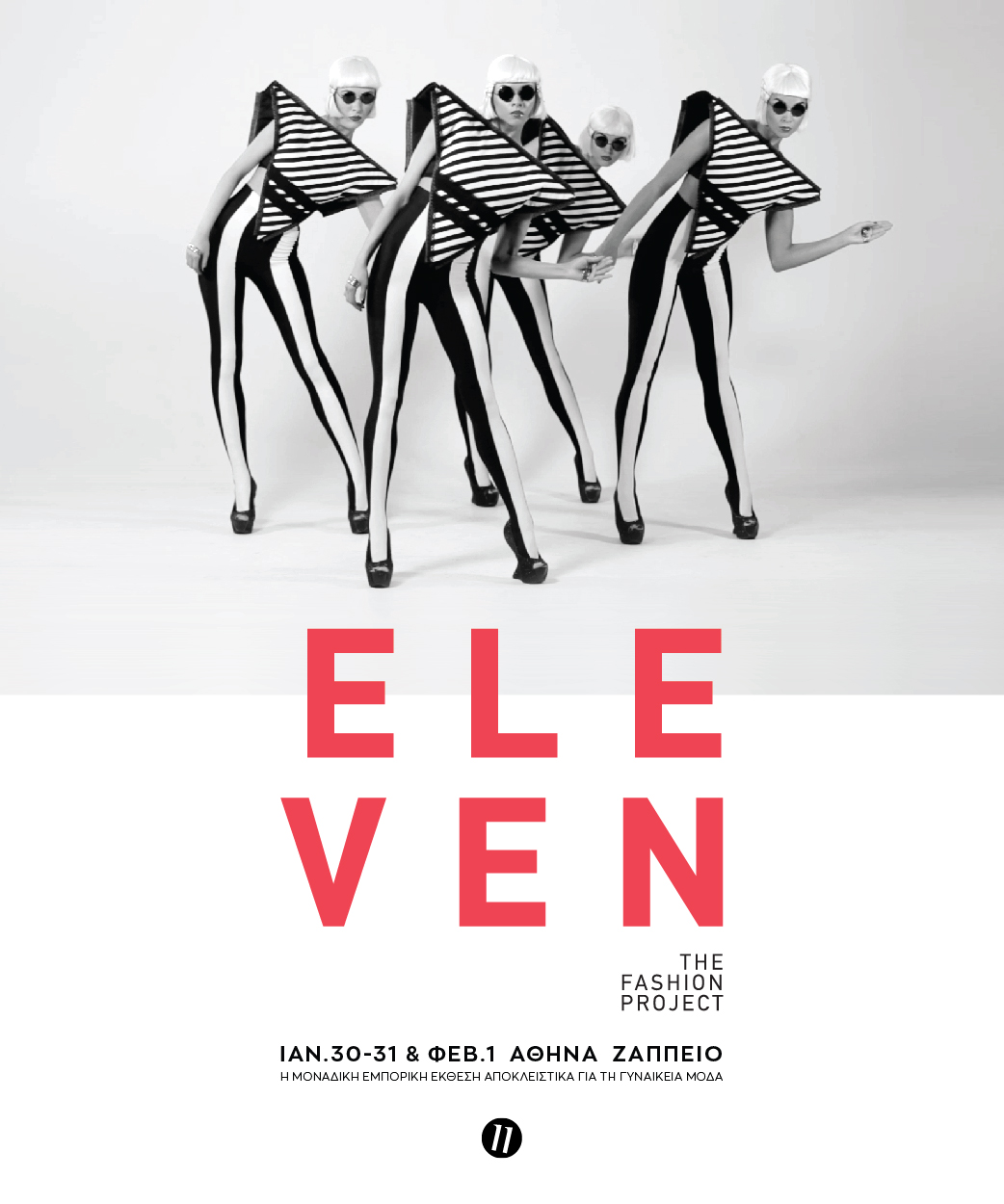LIFE & CULTURE
XpatAthens
Monday, 22 March 2021 02:15
SNFCC: Faces Of The Hero
In celebration of the 200th anniversary of the Greek Revolution of 1821, the Stavros Niarchos Foundation Cultural Center (SNFCC) is presenting a series of events, titled Faces of the Hero, which was created and is implemented through an exclusive grant from the Stavros Niarchos Foundation (SNF).
The heroic example set by the fighters of the Greek Revolution provides the impetus for an examination of the concepts of “hero” and “heroism” throughout time, through the prism of the performing and visual arts, dance, readings, lectures, exhibitions, and educational programs for adults and children. The connecting link permeating all the programs is the question, “How has the heroic ideal been reflected through art?”
The selection of the multifaceted thematic programming is a reflection of the mission that drives the SNFCC overall: to be an open public space that offers cultural experiences, entertainment, and education for all. The anniversary programming is centered around activating the SNFCC’s premises and developing synergies with its affiliate organizations, the National Library of Greece (NLG) and the Greek National Opera (GNO), while also focusing on investing in the organization’s artistic outreach.
Published in
Community
Tagged under
Monday, 26 April 2021 20:35
Agorá Marketplace - A Digital Marketplace Of Local Greek Products
In Ancient Greece, public life was at its most vibrant in the agorá! It was a public space that played a significant role in every aspect of social life - it also served as a marketplace where merchants kept stalls or shops to sell their products. It is this idea that inspired us to create our own Agorá in the form of an open digital space on our trusted platform where the international community can gather, navigate, and discover local products by local Greek businesses, designers, food producers, artists, authors, and independent creators.
We’re so excited to announce the launch of our
Although this new section of our website comes to life during a vital time to support local business and local economy, for us at XpatAthens AMKE, our Agorá is an added piece of our whole platform that further empowers our mission of contributing to the local community while living global experiences. Learn more about our Agorá below.
Why did we create the Agorá Marketplace? What’s behind the idea?
Our Agorá was created with the intention of connecting the international community with local Greek products. Always in alignment with our mission and nonprofit causes, we strive to bridge our readers with the local community in order to enhance their experience of living in Greece, while simultaneously supporting local businesses.
Just like it was in Ancient Greece, our Agorá is a marketplace where our community of global citizens can gather and explore local Greek products of quality, value and authenticity.
Just like it was in Ancient Greece, our Agorá is a marketplace where our community of global citizens can gather and explore local Greek products of quality, value and authenticity.
Who benefits from the Agorá Marketplace?
Everyone. Our Agorá is a space dedicated to supporting local businesses and local producers by sharing their products and telling their stories; while giving Greece’s international community the chance to discover local products and support local businesses. In other words, this unique space on XpatAthens benefits both our readers and local Greek businesses.
Why share your products in our marketplace?
Listing your products in our digital marketplace means that you’ll be seen by our unique community of readers who follow us both locally and internationally. Our Agorá is about connecting people with local Greek products and we do this with the intention of sharing and connecting our readers with local businesses.
Note, products are never purchased directly from XpatAthens, they are simply showcased (shared) in our Agorá. Those interested in making a purchase are directed via a hyperlink to the producers website directly. Additionally, XpatAthens does not receive commissions or donations for products discovered on our platform.
How much does it cost to post a product?
In alignment with the rest of our uploading fees, the charge for uploading products to our platform is as follows:
1 Product Post: €10 +vat (€12,40)
1 Year of Product Posts (limited to 5 monthly): €75 +vat (€93)
1 Year of Product Posts for Nonprofits & Charities: No Charge
1 Year of Product Posts (limited to 5 monthly): €75 +vat (€93)
1 Year of Product Posts for Nonprofits & Charities: No Charge
How does XpatAthens make money from Agorá Marketplace?
XpatAthens does not receive commissions or donations for products that are discovered in our Agorá. As outlined above, we charge a small amount for uploading products to our platform. Products are never purchased directly from XpatAthens, they are simply showcased (shared) in our Agorá. Those interested in purchasing a product are directed via a hyperlink to the producer's website directly.
If you have any questions or would like more information, feel free to contact us!
Published in
Local News
Tagged under
Thursday, 18 March 2021 17:30
Greeks Who Left Their Mark On The World In The Last 200 Years
Even though we, Greeks are few in numbers and it's mostly our ancient past that makes our country famous around the world, there have been many significant Greeks to leave their mark in the world since the creation of the modern Greek state.
Numerous Greeks have excelled in science and arts, won Nobel Prizes and Academy Awards, resolved problems, and saved thousands of lives with their scientific discoveries.
Here is a concise timeline of famous Greek people and events since 1811.
1811: In 1811, Pavlos Prosalentis who is considered the first professional sculptor in modern Greece, established a private art school; the first modern art school in Greece.
1823: Dionysios Solomos wirtes the Greek national anthem. Officially titled 'Ymnos is tin Eleftherian' in Greek and the 'Hymn to Liberty' in English, the Greek anthem, is a reminder not only of how far Greece has come since the defeat of the Ottoman Empire but also of the journey that led to freedom.
1832: Elizabeth Moutzan-Martinegou dies. Moutzan-Martinegou has been called the first female writer in modern Greece. She wrote poetry, more than 15 plays, and translated works of classical literature; her most famous work is her autobiography.
1863: Famous Egyptiot Greek poet Konstantinos P. Kavafis is born in Alexandria, Egypt in 1863. His most famous works are 'Waiting For the Barbarians' and 'Ithaca' and while almost all of his work was in Greek, he remained unrecognized in Greece, until after the publication of the first anthology of his work in 1935.
1887: Kallirhoe Parren launches the feminist movement in Greece with the founding of a newspaper, 'Ephemeris ton Kyrion' (Ladies' Journal), in 1887. The newspaper was run entirely by women and was an 8-page weekly publication until 1908 when it changed to a bi-monthly that ran until early 1916.
1938: After completing her secondary education, Melina Merkouri enrolled at National Theatre's Drama School. Merkouri became known to international audiences with the film 'Never on Sunday' for which, she earned the Best Actress Award at the 1960 Cannes Film Festival.
1953: On January 18, 1953, Eleni Skouras is elected as the first female member of the Greek Parliament. Eleni Skouras was born in Volos but moved to Thessaloniki in 1915 where she earned a law degree in 1950.
1954: In 1954 Greek physician George Papanikolaou published the 'Atlas of Exfoliative Cytology' the foundation of modern cytopathology. Papanikolaou is famous for inventing the Pap smear or Pap test, which is used worldwide for the detection and prevention of cervical cancer.
1977: On November 8, 1977, Greek archaeologist Manolis Andronikos discovered a tomb at Vergina which he identified as that of Philip II of Macedon.
1979: Odysseas Elytis was a Greek poet, essayist, and translator, and a major representative of romantic modernism in Greece and the world. In 1979, Elytis was awarded the Nobel Prize in Literature.
1988: In 1998 Theo Angelopoulos' film 'Eternity and a Day' won the Palme d'Or at the 51st Cannes Film Festival. Angelopoulos was one of the most influential and important filmmakers in the world.
2016: In 2016, Greek photojournalist Yiannis Behrakis along with his team from Thomson Reuters, won the esteemed prize in 2016 for Breaking News Photography for the coverage of the European refugee crisis.
To discover the full reel of notable people and events, please visit: greece2021.gr
Numerous Greeks have excelled in science and arts, won Nobel Prizes and Academy Awards, resolved problems, and saved thousands of lives with their scientific discoveries.
Here is a concise timeline of famous Greek people and events since 1811.
1811: In 1811, Pavlos Prosalentis who is considered the first professional sculptor in modern Greece, established a private art school; the first modern art school in Greece.
1823: Dionysios Solomos wirtes the Greek national anthem. Officially titled 'Ymnos is tin Eleftherian' in Greek and the 'Hymn to Liberty' in English, the Greek anthem, is a reminder not only of how far Greece has come since the defeat of the Ottoman Empire but also of the journey that led to freedom.
1832: Elizabeth Moutzan-Martinegou dies. Moutzan-Martinegou has been called the first female writer in modern Greece. She wrote poetry, more than 15 plays, and translated works of classical literature; her most famous work is her autobiography.
1863: Famous Egyptiot Greek poet Konstantinos P. Kavafis is born in Alexandria, Egypt in 1863. His most famous works are 'Waiting For the Barbarians' and 'Ithaca' and while almost all of his work was in Greek, he remained unrecognized in Greece, until after the publication of the first anthology of his work in 1935.
1887: Kallirhoe Parren launches the feminist movement in Greece with the founding of a newspaper, 'Ephemeris ton Kyrion' (Ladies' Journal), in 1887. The newspaper was run entirely by women and was an 8-page weekly publication until 1908 when it changed to a bi-monthly that ran until early 1916.
1938: After completing her secondary education, Melina Merkouri enrolled at National Theatre's Drama School. Merkouri became known to international audiences with the film 'Never on Sunday' for which, she earned the Best Actress Award at the 1960 Cannes Film Festival.
1953: On January 18, 1953, Eleni Skouras is elected as the first female member of the Greek Parliament. Eleni Skouras was born in Volos but moved to Thessaloniki in 1915 where she earned a law degree in 1950.
1954: In 1954 Greek physician George Papanikolaou published the 'Atlas of Exfoliative Cytology' the foundation of modern cytopathology. Papanikolaou is famous for inventing the Pap smear or Pap test, which is used worldwide for the detection and prevention of cervical cancer.
1977: On November 8, 1977, Greek archaeologist Manolis Andronikos discovered a tomb at Vergina which he identified as that of Philip II of Macedon.
1979: Odysseas Elytis was a Greek poet, essayist, and translator, and a major representative of romantic modernism in Greece and the world. In 1979, Elytis was awarded the Nobel Prize in Literature.
1988: In 1998 Theo Angelopoulos' film 'Eternity and a Day' won the Palme d'Or at the 51st Cannes Film Festival. Angelopoulos was one of the most influential and important filmmakers in the world.
2016: In 2016, Greek photojournalist Yiannis Behrakis along with his team from Thomson Reuters, won the esteemed prize in 2016 for Breaking News Photography for the coverage of the European refugee crisis.
To discover the full reel of notable people and events, please visit: greece2021.gr
Published in
Greek Philosophy & History
Tagged under
Thursday, 18 March 2021 07:00
Greek Bicentennial Performance Goes On Despite The Pandemic
An abundance of commemorating events such as museum exhibitions, theater productions, and historical re-enactments was planned in Greece to honor the bicentennial of the Greek War of Independence.
Due to the coronavirus pandemic, mezzo-soprano Artemis Bogri and her fellow vocalists performed the Greek National Opera’s new production of “Despo” in a theater empty of spectators. Despo, the title character in Pavlos Carrer’s 1875 opera chooses death over captivity by detonating ammunition stored in a fortress as Ottoman forces close in.
“Artists prepare two or three months for a production and then take that work to an audience,” she said. “Now, we have to generate that energy with no one there. That’s not easy.”
The bicentennial events intended to illustrate Greece’s modern accomplishments have been postponed, scaled back, or moved online due to the pandemic and school parades were canceled on account of the surge in Covid-19 infections.
Like the National Opera, other cultural foundations have formed small work teams to salvage their celebration plans despite the acute financial pressure they are facing due to the ongoing lockdown measures in Greece.
To read this article in full, please visit: ekathimerini.com
Due to the coronavirus pandemic, mezzo-soprano Artemis Bogri and her fellow vocalists performed the Greek National Opera’s new production of “Despo” in a theater empty of spectators. Despo, the title character in Pavlos Carrer’s 1875 opera chooses death over captivity by detonating ammunition stored in a fortress as Ottoman forces close in.
“Artists prepare two or three months for a production and then take that work to an audience,” she said. “Now, we have to generate that energy with no one there. That’s not easy.”
The bicentennial events intended to illustrate Greece’s modern accomplishments have been postponed, scaled back, or moved online due to the pandemic and school parades were canceled on account of the surge in Covid-19 infections.
Like the National Opera, other cultural foundations have formed small work teams to salvage their celebration plans despite the acute financial pressure they are facing due to the ongoing lockdown measures in Greece.
To read this article in full, please visit: ekathimerini.com
Published in
Local News
Tagged under
Tuesday, 16 March 2021 13:48
Athens Awarded At The CDP Europe Awards For Its Environmental Policies
The Municipality of Athens continues its dynamic presence in major European social "forums", presenting proposals that aim to ensure a sustainable future for European cities. The Mayor of Athens, Kostas Bakoyannis spoke to Euronews alongside the Chancellor of Germany, Angela Merkel, the Mayor of Paris, Anne Hidalgo, the Mayor of Turku Minna Arve, the European Commissioner, Mairead McGuinness, the Vice President of the European Investment Bank Ambroise Fayolle on the occasion of the award received by the Municipality of Athens at the CDP Europe Awards 2021 for all its actions aimed at the green recovery that set the coordinates for environmental policies of other cities.
Speaking about environmentally friendly solutions, that will free up public space and adopt a new model of sustainable mobility, Mr. Bakoyannis said: "At the end of the day we should be very clear about our strategic goals if we are to go backward or move forward ".
Talking about the day after this unprecedented health crisis, the Mayor of Athens said that history has taught that past pandemics were catalytic for the transformation of urban centers, adding that "this crisis is an opportunity to transform our cities bring them into the new century, to a different era with different challenges."
Mr. Bakoyannis then pointed out the need to find local solutions that will promote the reacquisition or releasing of quality public spaces and adopt a new model of sustainable mobility, which will not only concern cars but also accessibility, public transport, and alternative means of transportation. "We have to make sure, and this is very important for us in Europe, that we are really changing without losing our souls. "We do not want to turn our cities into theme parks, you know, we want to keep our DNA alive."
CDP is a non-profit organization that annually evaluates the actions of cities around the world and recognizes those that stand out. In 2020, for the second year in a row, Athens ranked high and was included in the A-list Cities, along with 87 cities around the world, for their efforts to reduce greenhouse gas emissions and build resilience to the impacts of climate change.
The CDP Europe Awards 2021 were attended by heads of large corporations, distinguished for their activities, such as LafargeHolcim, Lenzing, Handelsbanken Fonder, Ørsted, Eni, Norges Bank Investment Management, and others.
XpatAthens extends a warm thank you to This Is Athens and the City Of Athens for sharing with us news and inspiring stories about how Athens is constantly becoming a cleaner, friendlier, and more welcoming city to live in.
Speaking about environmentally friendly solutions, that will free up public space and adopt a new model of sustainable mobility, Mr. Bakoyannis said: "At the end of the day we should be very clear about our strategic goals if we are to go backward or move forward ".
Talking about the day after this unprecedented health crisis, the Mayor of Athens said that history has taught that past pandemics were catalytic for the transformation of urban centers, adding that "this crisis is an opportunity to transform our cities bring them into the new century, to a different era with different challenges."
Mr. Bakoyannis then pointed out the need to find local solutions that will promote the reacquisition or releasing of quality public spaces and adopt a new model of sustainable mobility, which will not only concern cars but also accessibility, public transport, and alternative means of transportation. "We have to make sure, and this is very important for us in Europe, that we are really changing without losing our souls. "We do not want to turn our cities into theme parks, you know, we want to keep our DNA alive."
CDP is a non-profit organization that annually evaluates the actions of cities around the world and recognizes those that stand out. In 2020, for the second year in a row, Athens ranked high and was included in the A-list Cities, along with 87 cities around the world, for their efforts to reduce greenhouse gas emissions and build resilience to the impacts of climate change.
The CDP Europe Awards 2021 were attended by heads of large corporations, distinguished for their activities, such as LafargeHolcim, Lenzing, Handelsbanken Fonder, Ørsted, Eni, Norges Bank Investment Management, and others.
XpatAthens extends a warm thank you to This Is Athens and the City Of Athens for sharing with us news and inspiring stories about how Athens is constantly becoming a cleaner, friendlier, and more welcoming city to live in.
Published in
Greece In The News
Tagged under
Thursday, 11 March 2021 16:48
A Season Of Traditions
Tis the carnival season! Learn about the wonderful traditions surrounding this period, enjoy delicious lenten dishes and check out what's on in Athens for art lovers during March!
Please click HERE to view this issue of our newsletter!
Published in
Newsletters
Tagged under
Wednesday, 10 March 2021 15:01
Celebrating The Greek Revolution Anniversary - National Garden Exhibition
Outdoor exhibition in the National Garden for the 200 years since the 1821 Greek Revolution
The Sylvia Ioannou Foundation, the National Historical Museum, and the Municipality of Athens are organizing a special exhibition in memory and honor to the heroes of 1821, as part of the celebration for the 200th anniversary of the Greek Revolution.
Two centuries after the national polygenesis, the National Garden, an emblematic landmark of Athens, hosts an outdoor exhibition, on Vasilissis Sofias Avenue, which brings to the fore the people who fought and sacrificed so that Greek people today can enjoy freedom and democracy.
The exhibition presents 22 paintings with some of 320 unique faces painted by Benjamin Mary (1792-1846), Belgian diplomatic representative of Greece.
The drawings were made naturally, mainly in Athens, between 1839 and 1844. They are published for the first time, giving us the opportunity to meet known and unknown figures of the Greek Revolution and Ottoman Greece, through the sensitive and penetrating gaze of a European artist.
Fighters, politicians, priests, scholars, philhellenes, everyday people, pose patiently for the portrait and Benjamin Mary manages to capture their expression in a unique moment in history.
Whether you’ve just arrived in town – or have been here for years – Athens always has new secrets to share!
This is Athens is the official guide to this captivating city of ancient energies and booming urban culture. Compiled by a team of specialist local writers, This is Athens brings you an authentic and intimate portrait of a living Athens beyond the guidebooks – along with daily curated listings of all the best events and great weekend inspiration all-year round. From must-know neighbourhoods and emerging art hubs, to gourmet hotspots, cool shopping and the buzziest bars, This is Athens will help you to get the most out of living in Athens!
Thank you This is Athens for your contribution as an XpatAthens Partner.
Two centuries after the national polygenesis, the National Garden, an emblematic landmark of Athens, hosts an outdoor exhibition, on Vasilissis Sofias Avenue, which brings to the fore the people who fought and sacrificed so that Greek people today can enjoy freedom and democracy.
The exhibition presents 22 paintings with some of 320 unique faces painted by Benjamin Mary (1792-1846), Belgian diplomatic representative of Greece.
The drawings were made naturally, mainly in Athens, between 1839 and 1844. They are published for the first time, giving us the opportunity to meet known and unknown figures of the Greek Revolution and Ottoman Greece, through the sensitive and penetrating gaze of a European artist.
Fighters, politicians, priests, scholars, philhellenes, everyday people, pose patiently for the portrait and Benjamin Mary manages to capture their expression in a unique moment in history.
Whether you’ve just arrived in town – or have been here for years – Athens always has new secrets to share!
This is Athens is the official guide to this captivating city of ancient energies and booming urban culture. Compiled by a team of specialist local writers, This is Athens brings you an authentic and intimate portrait of a living Athens beyond the guidebooks – along with daily curated listings of all the best events and great weekend inspiration all-year round. From must-know neighbourhoods and emerging art hubs, to gourmet hotspots, cool shopping and the buzziest bars, This is Athens will help you to get the most out of living in Athens!
Thank you This is Athens for your contribution as an XpatAthens Partner.
Published in
Art
Tagged under
Wednesday, 10 March 2021 14:34
5 Great Virtual Art Exhibitions To Visit In Athens This March
One year on, the resourceful and resilient galleries of Athens continue to find engaging ways to captivate our senses and channel the city’s bold artistic impulses, while their doors remain largely shuttered. This is Athens' resident art expert, Kiriakos Spirou, lists five fascinating digital exhibitions to quench your culture cravings in this month of March.
Gardening at Zoumboulakis Galleries
With spring’s arrival, the Zoumboulakis Galleries has created Athens’ first indoor botanical garden exhibition. In the vast basement space of its Kolonaki Square site (there’s a second Zoumboulakis space on Kriezotou dedicated to design), you can take a virtual stroll through green-thumbed works by twenty artists, both from Greece and abroad. The exhibition Gardening is a thought-provoking take on our pandemic-struck world, as well as a witty “return to nature” through a mix of painting, sculpture, installations and video. Thanks to the fresh eye of curator Georgia Liapi, who recently joined the gallery, the exhibition combines works by young and emerging artists, such as Yorgos Maraziotis and Melina Mosland, with more established gallery stalwarts like Stefanos Rokos and Nikos Tranos.
With spring’s arrival, the Zoumboulakis Galleries has created Athens’ first indoor botanical garden exhibition. In the vast basement space of its Kolonaki Square site (there’s a second Zoumboulakis space on Kriezotou dedicated to design), you can take a virtual stroll through green-thumbed works by twenty artists, both from Greece and abroad. The exhibition Gardening is a thought-provoking take on our pandemic-struck world, as well as a witty “return to nature” through a mix of painting, sculpture, installations and video. Thanks to the fresh eye of curator Georgia Liapi, who recently joined the gallery, the exhibition combines works by young and emerging artists, such as Yorgos Maraziotis and Melina Mosland, with more established gallery stalwarts like Stefanos Rokos and Nikos Tranos.
The Studio of Yiannis Pappas by the Benaki Museum
The late great sculptor Yiannis Pappas was a pivotal figure of Greek post-war art, not least because of his many commissions for public sculptures in cities and institutions all around Greece (if you pass Zappeio park, make sure to clock his statue of Alexander the Great on the corner of Amalias Avenue). Pappas’ former Athens home and studio in Zografou is an extraordinary place, filled with his bronze and marble sculptures, studies and drawings. In fact, this is the largest trove of the artist’s work, which he donated to the Benaki Museum in 2002, three years before his death. This well-produced virtual exhibition leads you step by step through the studio, with sound-guide snippets in several languages attached to important exhibits.
The late great sculptor Yiannis Pappas was a pivotal figure of Greek post-war art, not least because of his many commissions for public sculptures in cities and institutions all around Greece (if you pass Zappeio park, make sure to clock his statue of Alexander the Great on the corner of Amalias Avenue). Pappas’ former Athens home and studio in Zografou is an extraordinary place, filled with his bronze and marble sculptures, studies and drawings. In fact, this is the largest trove of the artist’s work, which he donated to the Benaki Museum in 2002, three years before his death. This well-produced virtual exhibition leads you step by step through the studio, with sound-guide snippets in several languages attached to important exhibits.
Posterity at The Blender Gallery
A small cultural hub for the southern suburbs of Athens, The Blender Gallery in glitzy Glyfada stages several exhibitions and live events throughout the year. Its current show (curated by Nestoras Katsimichas) features an impressive haul of 100 rare posters collected by Bosnian Serb engraver Milan Zunic. Originating from the 1960s onwards, the posters were produced in Eastern European countries (including former Eastern Germany), and are great examples of how graphic design and communication can leave room for authentic artistic expression.
A small cultural hub for the southern suburbs of Athens, The Blender Gallery in glitzy Glyfada stages several exhibitions and live events throughout the year. Its current show (curated by Nestoras Katsimichas) features an impressive haul of 100 rare posters collected by Bosnian Serb engraver Milan Zunic. Originating from the 1960s onwards, the posters were produced in Eastern European countries (including former Eastern Germany), and are great examples of how graphic design and communication can leave room for authentic artistic expression.
Stella Kapezanou at Evripides Gallery
One of the most imaginative young Greek contemporary painters around, Stella Kapezanou is in constant dialogue with pop aesthetics and art-history motifs, using a very personal, colour-drenched visual language. Highly-stylised people inhabit surrealistically patterned backgrounds, and albeit they appear immersed in glamour and luxury, their decadence is undermined by subtle humour and irony. Kapezanou is staging her second solo show at Kolonaki's Evripides Gallery, which is also presented in satisfying detail in the gallery's virtual viewing room.
One of the most imaginative young Greek contemporary painters around, Stella Kapezanou is in constant dialogue with pop aesthetics and art-history motifs, using a very personal, colour-drenched visual language. Highly-stylised people inhabit surrealistically patterned backgrounds, and albeit they appear immersed in glamour and luxury, their decadence is undermined by subtle humour and irony. Kapezanou is staging her second solo show at Kolonaki's Evripides Gallery, which is also presented in satisfying detail in the gallery's virtual viewing room.
Privacy, childhood, the family, safety and our need to belong are some of the primal themes explored in this digital display that features exhibits from Athens’ newest culture hub, the National Museum of Contemporary Art (EMST). Feels like home examines how artists have been engaging with these universal concepts of home in their work, with items by established Greek and foreign artists (there’s even a Magritte sculpture included). The exhibition is one of three chapters of the digital project Visualising Humanity, organised by the Network of Contemporary Culture Museums of the Ministry of Culture.
Whether you’ve just arrived in town – or have been here for years – Athens always has new secrets to share!
This is Athens is the official guide to this captivating city of ancient energies and booming urban culture. Compiled by a team of specialist local writers, This is Athens brings you an authentic and intimate portrait of a living Athens beyond the guidebooks – along with daily curated listings of all the best events and great weekend inspiration all-year round. From must-know neighbourhoods and emerging art hubs, to gourmet hotspots, cool shopping and the buzziest bars, This is Athens will help you to get the most out of living in Athens!
Thank you This is Athens for your contribution as an XpatAthens Partner.
Whether you’ve just arrived in town – or have been here for years – Athens always has new secrets to share!
This is Athens is the official guide to this captivating city of ancient energies and booming urban culture. Compiled by a team of specialist local writers, This is Athens brings you an authentic and intimate portrait of a living Athens beyond the guidebooks – along with daily curated listings of all the best events and great weekend inspiration all-year round. From must-know neighbourhoods and emerging art hubs, to gourmet hotspots, cool shopping and the buzziest bars, This is Athens will help you to get the most out of living in Athens!
Thank you This is Athens for your contribution as an XpatAthens Partner.
Published in
Art
Tagged under
Friday, 17 March 2023 16:06
8 Ways To Feel Like A Local In Athens
The monumental side of Athens comes at you like fireworks frozen in time, but if showstoppers like the Acropolis dazzle the first-time visitor, they also form part of the daily tapestry of life for regular Athenians. Tuning into the local rhythms is not necessarily an exercise in what's 'Instagrammable'. Rather, as a resident observer of this pulsing city, I’ve found that some of the best things about Athens are those little backstage sights and sounds that add up to an urban experience that can border on the theatrical. A tangible modern energy mixes with ancient allure, and despite some disruptions caused by the recent lockdowns, life goes on in a modified Athenian style. Here’s how to claim some of that celebrated Athens groove for yourself and feel more like a local (though you might have to be patient for just a little while longer to experience a couple of these suggestions):
Stroll Through Mets To Pangrati
Mets is one of the quietest central Athens neighbourhoods—and not just because it's home to the historic First Cemetery of Athens (where you’ll find the elaborate tomb of Heinrich Schliemann, the archaeologist who excavated ancient Troy). The streets here are an alluring jumble of townhouses in pastel shades with abundant pink bougainvillea flowers fluttering about. Some of the side roads, like Nikiforou Theotoki and Klitomachou, seem to leap right off of a 'Welcome to Athens" movie screen. Wander over to Varnava Square, where Mets flows into the bohemian heart of Pangrati. The little oval-shaped square is lined with traditional restaurants and hipster cafes--grab a takeaway coffee from Oliver Nuts & Flavours (20 Empedokelous) and take in the scene, even if it's somewhat more subdued right now.
Go To The Same Bakery Three Days In A Row
At the time of the first lockdown in spring 2020, I was heartened to see bakeries listed as essential businesses. The fournos, or bakery, is indeed an indispensable ingredient of Athenian life. Nearly every fournos sells the same staples but many have specialty items too, and some are quite posh—especially in upscale neighbourhoods like Kolonaki. Find one that you like and go there a few mornings in a row. After around the third day, they will likely start to recognise you and maybe even offer you a sample of that morning's fresh baked specialty. My current faves are Queen Bee at 45 Patriarchou Ioakim in Kolonaki (for the almond croissants), Afrato at 13 Evridamantos in Neos Kosmos (best cinnamon buns in town) and, slightly further afield in Ano Glyfada, Special Cakes (168 Dim. Gounari) for a whimsical atmosphere and heavenly layer cakes.
Take A Walk On The Fancy Side
New York has Park Avenue. Athens has Irodou Attikou Street - which is much shorter, but packs in more pomp and circumstance as the home of both the Presidential Palace and Maximou Mansion, official seat of the Greek Prime Minister. Tucked between Vassilis Sofias Avenue (on the north) and Vasileos Konstantinou and the Panathenaic Stadium on the south, the street straddles the National Garden and at all hours of the day or night, you'll clock Evzones dutifully standing guard at their posts along the street.
Go Higher Than The Acropolis
On most fair weathered weekends, many Athenians make a dash for Mount Ymittos. At 1,026 metres, this popular green escape is about seven times taller than the Acropolis. The ridge, which they call Trellos (the "crazy mountain"), forms the long eastern spine of the Attica basin and actually supplied fountains with drinking water in ancient Athens. Today there are hiking trails galore, but it's even worth commandeering a taxi if you have to, for your dose of sylvan splendour and the mesmerizing views of city and sea.
Swap Plaka For Mitropoleos Street
Most visitors make a beeline for the sinuous lanes of charming Plaka and rightly so. But as you’d expect, it's not where Athenians go to shop. For a more native retail experience, head one block south of bustling Ermou Street - the pedestrianized retail artery of global and Greek brands stretching from Syntagma Square - to the quieter and prettier Mitropoleos Street. This slender street is home to the impressive Metropolitan Church of Athens with its pretty plaza and is also packed with interesting one-off shops. There’s Dangerous Minds, where you can pick up cool street-rooted labels , Greek gourmet hotspot, the Ergon House food hotel; plus the "secret" back entrance to Hondos Center, the Greek emporium where locals go to stock up on their beauty and grooming staples (the main entrance is on Ermou).
Get A Greek Haircut
Speaking of… Athenians are obsessed with good grooming and it sometimes seems like there are more barbershops and hair salons in Athens than there are Athenians. Getting your locks styled or bangs trimmed is arguably as much a social exercise as an aesthetic one in the Greek capital. Of course, these days, you need to make an appointment in advance, but go on and give it a try. I can't speak for the ladies, but for a great gent's cut I'm partial to Music Barber Shop in Pangrati (21 Eratosthenous).
Potter About The Pnyx
The Pnyx hill is the storied place where ancient Athenians gathered for their ekklesia, the early democratic assemblies, and the ruins of the big carved steps and stone speakers' platform are still there. With the Parthenon in the background, this forested spot is truly beautiful – especially at sunset - but still tends to be better known among locals than visitors who generally flock to Philopappou instead.
Go to Piraeus—But Skip The Ferry
You may know Piraeus as the hectic port of Athens and the place where you go for that mad dash to the ferry, but did you know you can also get some of that Aegean island flavour without so much as stepping foot on a boat? Sunny weekend days and summer evenings after work see Athenians sidling up to breezy cafes and tavernas to enjoy fresh seafood by the water's edge in the atmospheric Piraeus 'hood of Mikrolimano. This poetic round harbour is just a short taxi ride from the center of Athens. Behind it, Kastella hill affords stunning views of the Saronic Gulf from the top. Or venture to elegant Zea Marina. There, on the south side of this horseshoe-shaped harbour, the yachts come in all shapes, sizes and colours: Greek sea daydreaming guaranteed.
This content was originally published on This is Athens
Written by: Anthony Grant
Photo Credit: Thomas Gravanis
Whether you’ve just arrived in town – or have been here for years – Athens always has new secrets to share! This is Athens is the official guide to this captivating city of ancient energies and booming urban culture. Compiled by a team of specialist local writers, This is Athens brings you an authentic and intimate portrait of a living Athens beyond the guidebooks – along with daily curated listings of all the best events and great weekend inspiration all-year round. From must-know neighbourhoods and emerging art hubs, to gourmet hotspots, cool shopping and the buzziest bars, This is Athens will help you to get the most out of living in Athens!
Thank you This is Athens for your contribution as an XpatAthens Partner.
Stroll Through Mets To Pangrati
Mets is one of the quietest central Athens neighbourhoods—and not just because it's home to the historic First Cemetery of Athens (where you’ll find the elaborate tomb of Heinrich Schliemann, the archaeologist who excavated ancient Troy). The streets here are an alluring jumble of townhouses in pastel shades with abundant pink bougainvillea flowers fluttering about. Some of the side roads, like Nikiforou Theotoki and Klitomachou, seem to leap right off of a 'Welcome to Athens" movie screen. Wander over to Varnava Square, where Mets flows into the bohemian heart of Pangrati. The little oval-shaped square is lined with traditional restaurants and hipster cafes--grab a takeaway coffee from Oliver Nuts & Flavours (20 Empedokelous) and take in the scene, even if it's somewhat more subdued right now.
Go To The Same Bakery Three Days In A Row
At the time of the first lockdown in spring 2020, I was heartened to see bakeries listed as essential businesses. The fournos, or bakery, is indeed an indispensable ingredient of Athenian life. Nearly every fournos sells the same staples but many have specialty items too, and some are quite posh—especially in upscale neighbourhoods like Kolonaki. Find one that you like and go there a few mornings in a row. After around the third day, they will likely start to recognise you and maybe even offer you a sample of that morning's fresh baked specialty. My current faves are Queen Bee at 45 Patriarchou Ioakim in Kolonaki (for the almond croissants), Afrato at 13 Evridamantos in Neos Kosmos (best cinnamon buns in town) and, slightly further afield in Ano Glyfada, Special Cakes (168 Dim. Gounari) for a whimsical atmosphere and heavenly layer cakes.
Take A Walk On The Fancy Side
New York has Park Avenue. Athens has Irodou Attikou Street - which is much shorter, but packs in more pomp and circumstance as the home of both the Presidential Palace and Maximou Mansion, official seat of the Greek Prime Minister. Tucked between Vassilis Sofias Avenue (on the north) and Vasileos Konstantinou and the Panathenaic Stadium on the south, the street straddles the National Garden and at all hours of the day or night, you'll clock Evzones dutifully standing guard at their posts along the street.
Go Higher Than The Acropolis
On most fair weathered weekends, many Athenians make a dash for Mount Ymittos. At 1,026 metres, this popular green escape is about seven times taller than the Acropolis. The ridge, which they call Trellos (the "crazy mountain"), forms the long eastern spine of the Attica basin and actually supplied fountains with drinking water in ancient Athens. Today there are hiking trails galore, but it's even worth commandeering a taxi if you have to, for your dose of sylvan splendour and the mesmerizing views of city and sea.
Swap Plaka For Mitropoleos Street
Most visitors make a beeline for the sinuous lanes of charming Plaka and rightly so. But as you’d expect, it's not where Athenians go to shop. For a more native retail experience, head one block south of bustling Ermou Street - the pedestrianized retail artery of global and Greek brands stretching from Syntagma Square - to the quieter and prettier Mitropoleos Street. This slender street is home to the impressive Metropolitan Church of Athens with its pretty plaza and is also packed with interesting one-off shops. There’s Dangerous Minds, where you can pick up cool street-rooted labels , Greek gourmet hotspot, the Ergon House food hotel; plus the "secret" back entrance to Hondos Center, the Greek emporium where locals go to stock up on their beauty and grooming staples (the main entrance is on Ermou).
Get A Greek Haircut
Speaking of… Athenians are obsessed with good grooming and it sometimes seems like there are more barbershops and hair salons in Athens than there are Athenians. Getting your locks styled or bangs trimmed is arguably as much a social exercise as an aesthetic one in the Greek capital. Of course, these days, you need to make an appointment in advance, but go on and give it a try. I can't speak for the ladies, but for a great gent's cut I'm partial to Music Barber Shop in Pangrati (21 Eratosthenous).
Potter About The Pnyx
The Pnyx hill is the storied place where ancient Athenians gathered for their ekklesia, the early democratic assemblies, and the ruins of the big carved steps and stone speakers' platform are still there. With the Parthenon in the background, this forested spot is truly beautiful – especially at sunset - but still tends to be better known among locals than visitors who generally flock to Philopappou instead.
Go to Piraeus—But Skip The Ferry
You may know Piraeus as the hectic port of Athens and the place where you go for that mad dash to the ferry, but did you know you can also get some of that Aegean island flavour without so much as stepping foot on a boat? Sunny weekend days and summer evenings after work see Athenians sidling up to breezy cafes and tavernas to enjoy fresh seafood by the water's edge in the atmospheric Piraeus 'hood of Mikrolimano. This poetic round harbour is just a short taxi ride from the center of Athens. Behind it, Kastella hill affords stunning views of the Saronic Gulf from the top. Or venture to elegant Zea Marina. There, on the south side of this horseshoe-shaped harbour, the yachts come in all shapes, sizes and colours: Greek sea daydreaming guaranteed.
This content was originally published on This is Athens
Written by: Anthony Grant
Photo Credit: Thomas Gravanis
Whether you’ve just arrived in town – or have been here for years – Athens always has new secrets to share! This is Athens is the official guide to this captivating city of ancient energies and booming urban culture. Compiled by a team of specialist local writers, This is Athens brings you an authentic and intimate portrait of a living Athens beyond the guidebooks – along with daily curated listings of all the best events and great weekend inspiration all-year round. From must-know neighbourhoods and emerging art hubs, to gourmet hotspots, cool shopping and the buzziest bars, This is Athens will help you to get the most out of living in Athens!
Thank you This is Athens for your contribution as an XpatAthens Partner.
Published in
Travel Greece
Tagged under
Tuesday, 09 March 2021 13:41
ERTFLIX: A Free Hybrid TV Platform
Amidst the Covid-19 pandemic, ERT–the Greek public television network–made an important addition to its program, by launching a new hybrid television platform called ERTFLIX.
ERTFLIX provides free access to several award-winning foreign films, foreign TV series, Greek series, award-winning documentaries, children's programs, and educational courses designed by the Ministry of Education.
The platform was designed by ERT technicians and its interface is very similar to Netflix or Amazon Prime.
Published in
Local News
Tagged under

